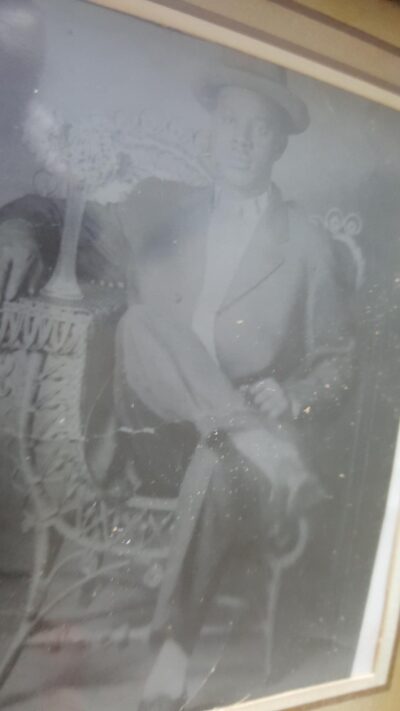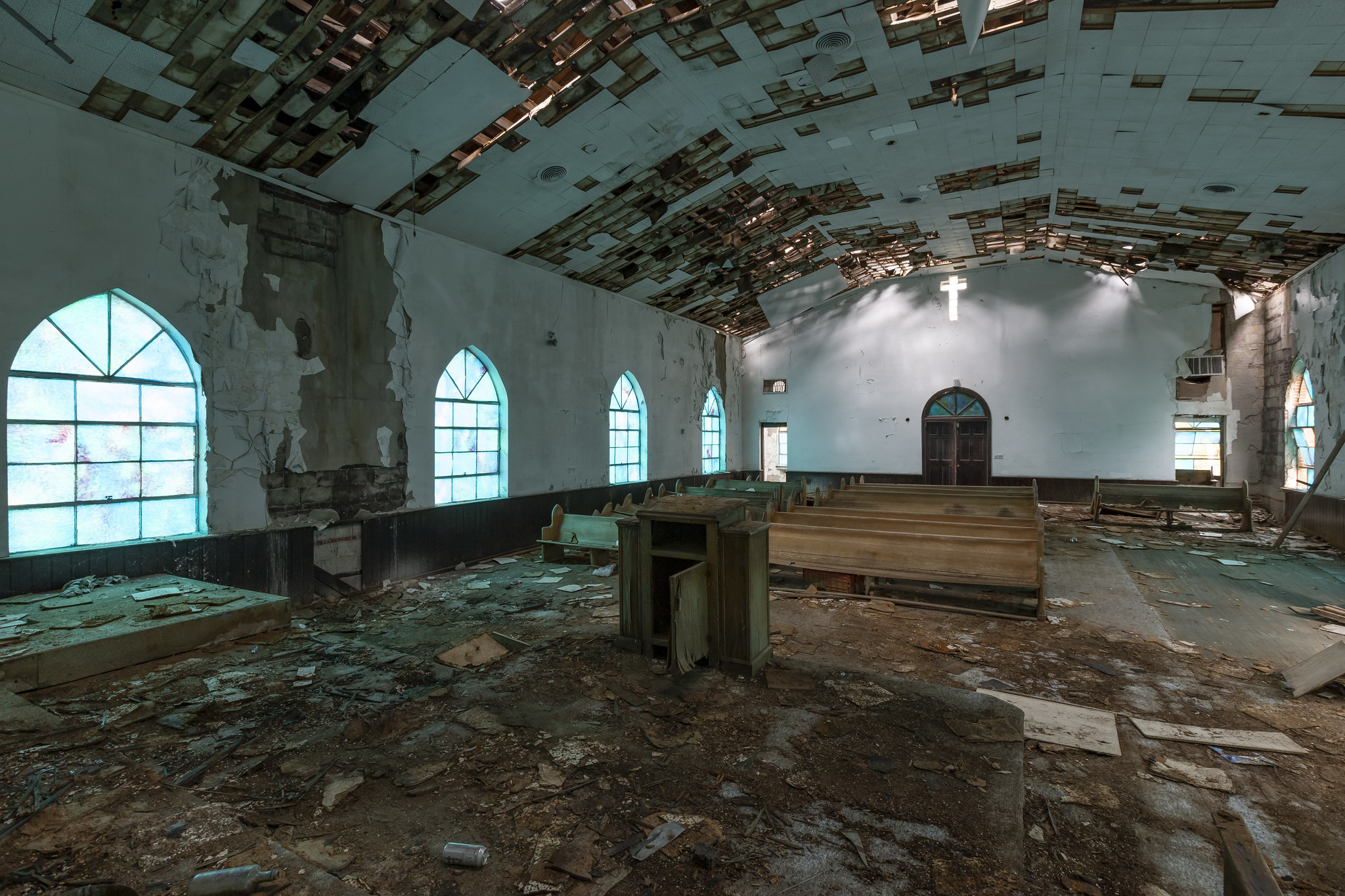LEGACY
Located at 301 Spruce Street, Mt. Calvary Baptist Church was built in 1955 by James Edwards Hutchins. Hutchins, one of the few black architects-builders during this era, was commissioned by the church under the leadership of Reverend William Milton Hill (Moderator of the Southern Black Convention), and also the great grandfather of JeVon C. Shannon. It served the Brooklyn community until 1999, when Reverend John Allen Newman relocated the congregation from the neighborhood to new Northside location near Gateway Town Center. Newman now serves as the pastor of The Sanctuary of Mt. Calvary, formally Abyssinia Missionary Baptist Church, on Kings Rd. He recently made national news when he married Donald Trump’s Apprentice reality-TV celebrity Omarosa Manigault.
DEEP OFF IN THE CREEK
Early in 1864, the Union’s 1st and 2nd South Carolina Infantry Regiments, which held Jacksonville against the Confederacy in March 1863, were designated the 33rd and 34th U.S. Colored Infantry. The former slaves and black soldiers who resettled in Brooklyn were “Buffalo Soldiers,” but not yet. The term “Buffalo Soldier” first applied to the U.S. Army’s 10th Calvary Regiment formed in 1866, then spread to all United States Colored Troops, even retroactively.
Halfway through the Civil War, in March 1863, black Union soldiers of the 54th and the 35th USCT occupied Confederate Jacksonville for nearly three weeks.
Back in February 1864, the United States sent troops down to Florida, including three black regiments, to sever Confederate supply routes and recruit black soldiers. Brigadier General Truman Seymour landed troops at Jacksonville, in an area already seized by the Union in March 1862. Seymour’s forces then made several raids in the area, seizing several Confederate camps, capturing small bands of troops and artillery pieces, and liberating slaves, all the while meeting very little resistance.
The following February, the United States sent 7,000 troops into Confederate Florida, including three black regiments. When the Confederacy scored a resounding victory at the Battle of Olustee, Jacksonville, more than 40 miles east, became a defensive wall against Confederate advancement, with black soldiers manning a Union stockade with a 12 foot moat and perhaps two dozen heavy artillery guns through the marshes of what’s now inner-city LaVilla down to Brooklyn, where Camp Foster stood near the intersection of today’s Jackson and Magnolia Streets.
Perhaps one of those USCT, United States Colored Troops, or “Buffalo Soldiers,” first called the heart pine cottage at 328 Chelsea Street home. Though former slaves and black Union soldiers first occupied this western part of Brooklyn in the 1860s and ’70s, no records indicate 328’s first owner.
Following the war, ex-Confederate soldier Miles Prices purchased a large plot of land just west of the city, had it platted into lots, and sold them to former slaves and soldiers of the United States Colored Troops, later known as Buffalo Soldiers. This area would later be known as Brooklyn and by the 1880s, it held a population of 1,000 and a few hundred homes and mansions. In 1887, Brooklyn and several other suburbs were annexed by Jacksonville.
The last Buffalo Soldier’s house steps forward to the street. The houses alongside it stand back. Houses that pre-date present street grids sometimes extend to asphalt, as others stand crooked on 1880s’ and ’90s’ maps.
ALONG CAME MT CALVARY
The congregation of Mt. Calvary Baptist Church held its first services in 1896 in the historically African-American neighborhood of Brooklyn in Jacksonville, Florida. Among those in attendance were former United States Colored Troops (Buffalo Soldiers) who fought against the Confederacy during the Civil War. Following the war, in 1868, Miles Price, a Confederate veteran purchased a former 800-acre plantation. He sold off the southern portion of the property, which would later be developed into the neighborhood known as Riverside. The northern portion was developed by himself and sold to former slaves and black Union soldiers to establish a new neighborhood called Brooklyn. While Price was the one to name the neighborhood, it is unknown why a former Confederate soldier chose a name associated with the New York boroughs. Developed as a residential suburb, the area quickly grew after the establishment of a streetcar line. By the 1890s, more than 1,000 people lived in Brooklyn in more than 250 houses.

In its first fifty years, Mt. Calvary Baptist Church worshipped in a small white wood-framed building. After nine pastors, Reverend William Hill came to the pulpit in 1942 and led Mt. Calvary as pastor until his death 30 years later. Reverend Hill believed the church needed a new sanctuary and wanted to build a structure to accommodate the church’s growth as well as announce its importance to the city. Reverend Hill commissioned one of the few black architects in Jacksonville, James Edward Hutchins, to build the new church. Hutchins would design and build at least six other black churches and homes throughout the segregated black neighborhoods of College Park and Durkee Gardens, where prominent black physicians, educators, and business leaders lived.
Reverend William Hill served as pastor of Mt. Calvary longer than any of his nine predecessors and christened a new sanctuary cementing his legacy within the church.

By the 1950s, the neighborhood of Brooklyn had nearly 6,000 residents. In 1983, John Allen Newman arrived in Jacksonville and became pastor of Mt. Calvary Baptist Church. Most of the Brooklyn neighborhood still attended Mt. Calvary in Newman’s early years as pastor. In early 1988, Newman asked church members to donate to the church on behalf of Jesse Jackson’s presidential campaign. He told the media that he believed “in holistic salvation, not just personal salvation, but the salvation of a person’s environment.” As Newman left traditional black Baptist teaching behind, he alienated himself from many within the neighborhood.
Shortly after becoming the new pastor, Reverend Newman convinced the congregation of Mt. Calvary that they needed a newer sanctuary, which he wanted to build diagonally across the street. He asked the whole community for donations, proclaiming he would build a walkway between the two churches. Newman even went as far as to ask longtime church members to mortgage their homes to help pay for the construction. The neighboring church was never finished and would later be demolished by the city. In 1999, Reverend Newman dissolved Mt. Calvary Baptist Church, leaving it abandoned in Brooklyn, and began The Sanctuary at Mt. Calvary in a former car dealership.
In promotional materials, The Sanctuary at Mt. Calvary links its history back to Brooklyn in 1896. Recently, Newman moved his congregation into another old church, a former Baptist church in the neighborhood of Grant Park. He made national news by proposing from the pulpit to his then-girlfriend, reality show participant, and former Trump aide, Omarosa Manigault. Due to the increasing use of the railway, Brooklyn developed into a more commercial and industrial area. Construction of the Fuller Warren Bridge in 2000 cut off the neighborhood, forcing many residents to move. Today, many structures in the neighborhood sit in disrepair including the former church with no plans for renovation.



(reference AbandonedSoutheast.com)

